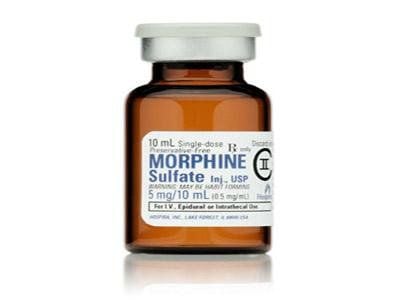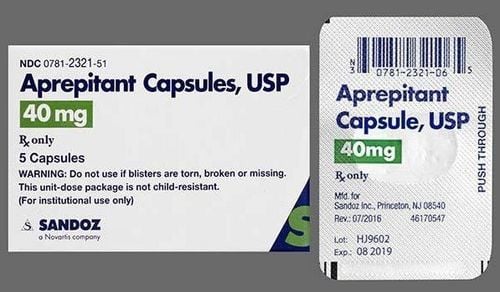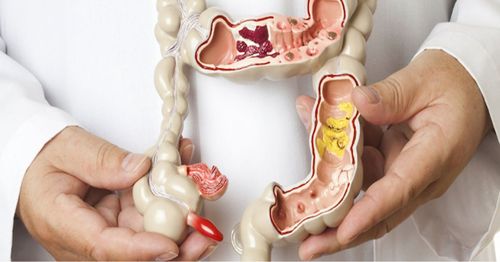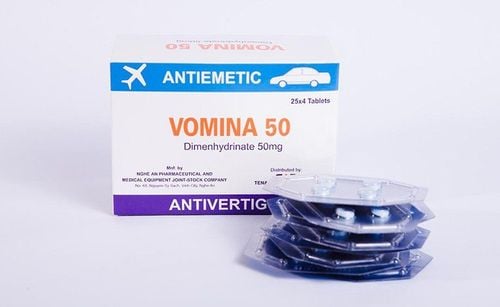This is an automatically translated article.
Article by Specialist I Tran Thi Anh Hien - Anesthesiologist - Anesthesiology Department - Vinmec Central Park International Hospital
Vomiting and nausea after surgery, if not well controlled, can affect the patient's psychology and surgical results, and can cause some complications such as electrolyte and water disorders, or pneumonia. due to inhalation of vomit from the stomach.
1. Effect of vomiting and nausea after surgery
Vomiting and nausea are one of the common complications in postoperative patients. According to statistics from the American Society of Anesthesiology, about 20 to 30% of patients experience vomiting and nausea within 24 hours of surgery, this rate increases to 80% in high-risk patients.
Vomiting and nausea after surgery, if not well controlled, can affect the patient's psychology and surgical results, and can cause some complications such as electrolyte and water disorders, or pneumonia. due to aspiration of vomit from the stomach (Mendelson's syndrome).
Prophylaxis as well as treatment of vomiting and nausea after surgery is an issue of great interest in improving the quality of care and treatment of patients after surgery. The use of prophylactic antiemetics should be based on an assessment of the patient's risk of postoperative nausea and vomiting. However, there is no single scale that can accurately predict the risk of postoperative nausea and vomiting for a patient, but only allows clinicians to estimate risk across patient groups.
2. Assess the risk of vomiting and nausea in patients after surgery
2.1. Risk factors in adults
Author Apfel used the following 4 factors to assess the risk of nausea and vomiting after surgery. Each risk factor is counted as 1 point. The more predictive factors, the higher the risk of vomiting and nausea after surgery. Factors included:
Women who do not smoke, Motion sickness or history of vomiting and nausea after surgery Morphine use during and after surgery Apfel transcripts
| Điểm nguy cơ | 0 | 1 | 2 | 3 | 4 |
| Ước lượng nguy cơ (%) | 10% | 20% | 40% | 60% | 80% |
| Nguy cơ nôn và buồn nôn sau khi phẫu thuật | Thấp | Thấp | Trung bình | Cao | Cao |

2.2. Risk factors in children
Using the Eberhart scale:
3 years of age History of nausea and vomiting after surgery by self, parents or siblings Double eyelid surgery Surgery time 30 minutes
| Điểm nguy cơ | 1 | 2 | 3 | 4 |
| Ước lượng nguy cơ (%) | 10% | 30% | 55% | 70% |
In addition, the British Association of Pediatric Anesthesia has introduced the concept of "emetic surgery": tonsillectomy and VA curettage, middle ear surgery.
3. Prophylaxis, treatment of vomiting and nausea after surgery
Recommended strategies to reduce the risk of postoperative nausea and vomiting include:
Assess whether regional anesthesia can be used as an alternative to anesthesia If anaesthesia: Empty the stomach before surgery; intravenous injection of Ranitidine 2 mg/kg 45 minutes before induction of anesthesia; give the patient 100% oxygen for 3 minutes before induction of anesthesia; induction and maintenance of anesthesia with PROPOFOL; reduce the concentration of volatile anesthetics, do not use N2O; Minimize the use of OPIOID during and after surgery.
4. Prophylaxis, treatment of vomiting and nausea after surgery at Vinmec
Prophylaxis of postoperative nausea and vomiting:
Low risk: no drug Moderate risk: Ondansetron + Dexamethasone High risk: Ondansetron + Dexamethasone + intravenous anesthesia Rescue therapy: Metoclopramide, Droperidol
| Thuốc | Liều | Thời điểm dùng |
| Ondansetron |
Người lớn: 4-8 mg Trẻ em: 50-100 mcg/kg, tối đa 4 mg |
Cuối cuộc mổ |
| Dexamethasone |
Người lớn: 4-8 mg Trẻ em: 150 mcg/kg, tối đa 5 mg |
Lúc khởi mê |
| Metoclopramide | Người lớn: 10 mg | Điều trị giải cứu |
Please dial HOTLINE for more information or register for an appointment HERE. Download MyVinmec app to make appointments faster and to manage your bookings easily.














